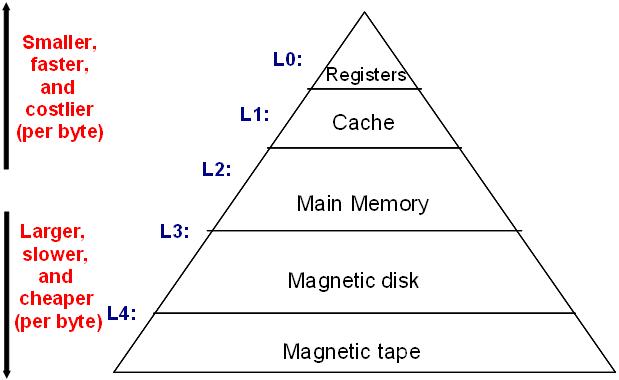The term memory hierarchy is used in computer architecture when discussing performance issues in computer architectural design, algorithm predictions, and the lower level programming constructs such as involving locality of reference. A "memory hierarchy" in computer storage distinguishes each level in the "hierarchy" by response time. Since response time, complexity, and capacity are related, the levels may also be distinguished by the controlling technology.
In other word memory hierarchy is the trade off between the cost,capacity and the access time.
The overall goal of using a memory hierarchy in designing the computer system is to obtain the highest
possible average access speed while minimizing total cost of entire
memory system.
- If capacity increases access time increases i.e. slower and due to which cost per bit decreases.
- If access time decreases i.e. faster capacity decreases and due to which cost per bit increases.



No comments:
Post a Comment
its cool